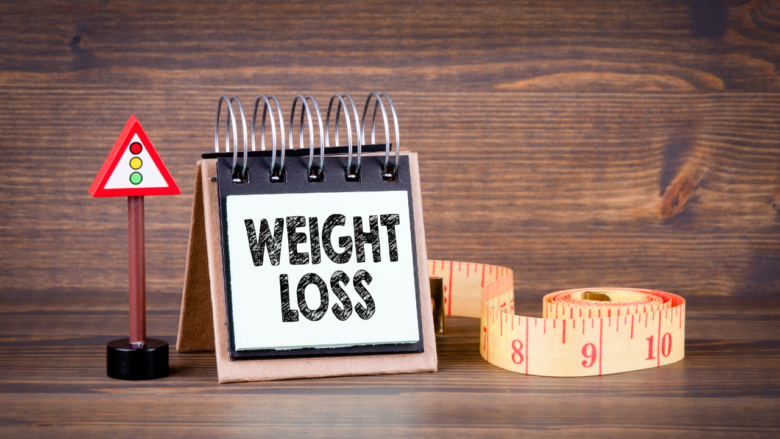Adjusting calorie intake is one of the most powerful tools to reignite weight loss after a stall. However, many people make the mistake of drastically cutting calories, leading to fatigue, muscle loss, and metabolic slowdown—making it even harder to lose weight in the long run.
The key is to adjust calories naturally, gradually, and sustainably, ensuring your body stays nourished and your metabolism stays high. This article will provide you with a practical, step-by-step guide to recalibrating your calorie intake without starving yourself or compromising your health.
Why You Need to Adjust Calories
As you lose weight, your body requires fewer calories to function. This decrease happens because:
- Your basal metabolic rate (BMR) drops as your body mass decreases.
- The energy cost of physical activity reduces as moving less weight becomes easier.
- Your body adapts to conserve energy as a survival mechanism.
If you keep eating the same number of calories from the start of your journey, your intake may match or even exceed your reduced needs, causing a weight loss stall.
But cutting calories too drastically isn’t the answer. Severe calorie restriction triggers your body to slow metabolism, burn muscle tissue, and increase hunger hormones—making weight loss harder and less sustainable.
Step-by-Step Guide to Adjust Calories Naturally
Step 1: Calculate Your Updated Calorie Needs
The first step is estimating your new total daily energy expenditure (TDEE) based on your current weight and activity level. Online calculators can help but here’s a simple way:
- Use your current weight and activity level as inputs.
- Include all activity, not just workouts, but also daily movements (NEAT).
- Remember, as you lose weight, recalculate every 4 weeks or after every 5–10 pounds lost.
Knowing your updated calorie needs ensures your adjustments are accurate and not guesswork.
Step 2: Create a Moderate Calorie Deficit
To lose fat, you need to consume fewer calories than you burn—but keep the deficit modest:
- Aim for a deficit of about 10-15% below your new maintenance level.
- This usually translates to a 200–400 calorie deficit per day, which is effective but sustainable.
- Avoid deficits greater than 25%, which can backfire by slowing metabolism and increasing cravings.
For example, if your maintenance is 1800 calories/day, try reducing to around 1530–1620 calories/day instead of slashing to 1200 or less.
Step 3: Prioritize Nutrient-Dense Foods
When adjusting calories, focus on foods that keep you full and nourished:
- Protein: Include lean meats, eggs, dairy, legumes, and plant proteins. Protein is essential for muscle preservation, satiety, and metabolic rate.
- Fiber: Vegetables, fruits, whole grains, and legumes help you feel full longer.
- Healthy Fats: Avocado, nuts, seeds, and olive oil support hormone health and satisfaction.
- Avoid empty calories from sugary drinks, refined carbs, and processed snacks.
Eating whole, minimally processed foods helps manage hunger and maintain energy levels, reducing the temptation to overeat.
Step 4: Monitor Your Progress and Hunger
Keep track of how you feel physically and mentally during calorie adjustments:
- Are you experiencing excessive hunger or fatigue?
- Is your performance in workouts declining?
- Are your mood and sleep affected?
If yes, your calorie deficit may be too large or your macronutrient balance may need adjustment. Slow and steady wins the race.
Step 5: Adjust Calories Based on Progress
If your weight loss plateaus again after 3–4 weeks, consider:
- Reducing calories by another 100–150 per day.
- Increasing non-exercise activity (NEAT) to burn more calories naturally.
- Rebalancing your macronutrients (see The Role of Macros in Weight Loss: Finding Your Natural Balance).
Avoid making drastic cuts quickly; instead, implement small changes consistently to protect your metabolism.
Tips for Avoiding Common Pitfalls
Don’t Ignore Hunger Signals
Severe calorie cuts often lead to intense hunger, binge episodes, or food obsession. Listen to your body’s hunger cues and eat mindfully.
Avoid Over-Exercising
More exercise doesn’t always equal more fat loss—especially if you don’t fuel properly. Overtraining increases cortisol, which can stall weight loss. Pair calorie adjustments with moderate activity and consider strategies to increase NEAT (read How to Move More Naturally: NEAT Strategies to Break a Plateau).
Stay Hydrated
Sometimes, thirst can be mistaken for hunger. Drinking enough water supports digestion and fullness.
How Sleep and Stress Affect Your Calorie Needs
Poor sleep and chronic stress elevate cortisol, a hormone that promotes fat storage and increases appetite. Even with a calorie deficit, high cortisol can cause stalls.
Improving sleep and stress management helps regulate your hunger hormones, making calorie adjustments more effective. Learn practical ways to improve rest in Why Your Sleep and Stress Levels May Be Sabotaging Your Weight Loss.
Supporting Gut and Hormonal Health During Calorie Adjustment
Gut health impacts digestion and nutrient absorption, while hormones regulate metabolism and fat storage. A healthy gut and balanced hormones support your calorie deficit efforts.
Include probiotic and prebiotic foods, avoid processed foods, and nourish your thyroid with minerals like iodine and selenium. For detailed guidance, visit Gut Health and Hormones: The Hidden Factors Behind Your Weight Loss Stall.
How This Article Connects to Overcoming Weight Loss Stalls Naturally
Adjusting calories is just one piece of the puzzle. For a complete approach that includes macro balancing, movement, stress management, and gut health, see our comprehensive guide: How to Overcome a Weight Loss Stall Naturally. Together, these strategies help you break through plateaus without starving or sacrificing health.
Summary
- Calculate your updated calorie needs regularly.
- Create a modest 10–15% deficit to lose fat sustainably.
- Prioritize protein, fiber, and healthy fats for fullness and metabolism.
- Monitor hunger, energy, and mood to avoid over-restriction.
- Adjust calories gradually and pair with natural movement increases.
- Support your sleep, stress management, gut, and hormones for better results.
By following these practical steps, you can naturally adjust your calorie intake, break through stalls, and continue progressing toward your weight loss goals without starving yourself or risking burnout.



